SF Bay Ospreys 2021 Season
By Osprey Cam Video Assistant
Comparing our past five seasons of Osprey cam footage, I’d have to say the 2021 season was one of the best for our SF Bay Osprey family. Three healthy juveniles were successfully launched into the world while the infamous Ospreys we know as Rosie and Richmond, worked together seamlessly and devotedly from beginning to end.
It all began on a beautiful afternoon in mid-February. The winds were soft, the air clear, when an Osprey landed lightly on the nest. Someone in the live chat noted the arrival. Would it be another floater? Richmond? The camera zoomed in. A surprised yet triumphant cry, “It’s Rosie!”. It was her earliest return yet recorded, and the joy of her successful return raised everyone’s spirits after a long, pandemic-shrouded winter.
 Rosie returns to the nest by SF Bay Osprey Cam
Rosie returns to the nest by SF Bay Osprey Cam
Despite Rosie’s early return, Richmond was remarkably absent. Days passed, and while Rosie was frequently seen around the nest area, she was always alone. Did Richmond even realize she was back? In years past he had appeared within minutes or at most hours of Rosie’s return (see all of Rosie’s arrivals and departures over the years). Finally, a full week after her return, both Rosie and Richmond appeared at the nest together. The season could finally begin.
 Rosie and Richmond on the nest by SF Bay Osprey Cam
Rosie and Richmond on the nest by SF Bay Osprey Cam
After a few weeks spent rebuilding the nest and getting reacquainted, Rosie laid her first egg March 24, about a week early from previous seasons. Seventy-one hours later came the second egg, and 73 hours after that, on March 30, the final egg was laid.
If you haven’t followed the Osprey cam for long, one thing you need to know is that Richmond absolutely loves being a dad. He and Rosie vie for the chance to sit on the eggs, and occasionally Richmond will even position himself right next to Rosie to “help”.
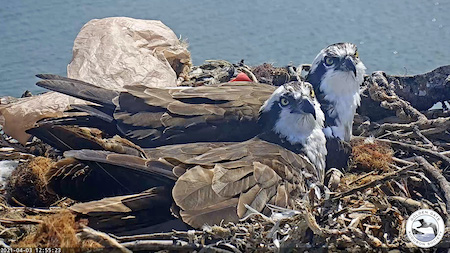 Rosie and Richmond coincubate eggs by SF Bay Osprey Cam
Rosie and Richmond coincubate eggs by SF Bay Osprey Cam
Fishing and Banding and Surprises, Oh My!
Right on schedule, the first egg hatched May 3. One of the musically inclined Live Chatters, craigor, put the first bobblehead to music. By May 5th, Rosie and Richmond had three healthy Osprey chicks to feed. Richmond, who had been bringing 12-15 fish per week during incubation, started ramping up his deliveries, and just a few weeks later was bringing 25-30 fish per week, many of them trout from the San Pablo Reservoir 7 miles away. …



 Acorn Woodpecker in the “bird species paint chip” project Field Guide.
Acorn Woodpecker in the “bird species paint chip” project Field Guide.
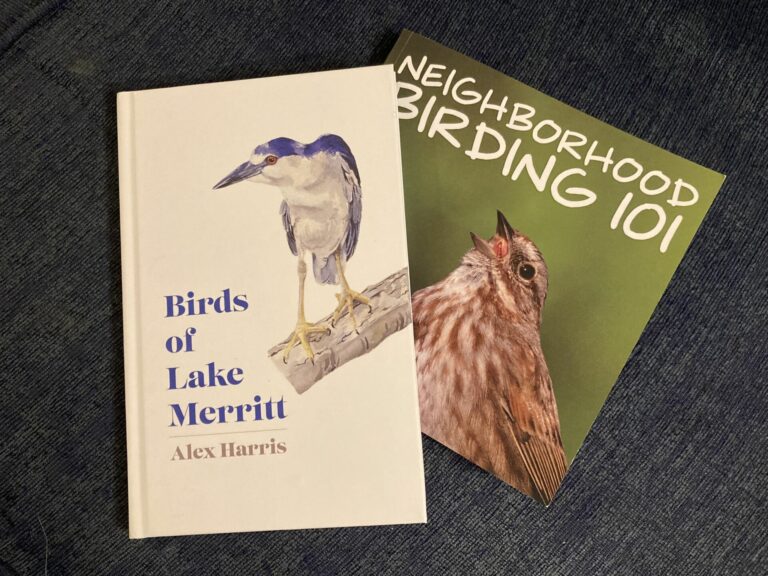
 Birds of Lake Merritt by Alex Harris
Birds of Lake Merritt by Alex Harris
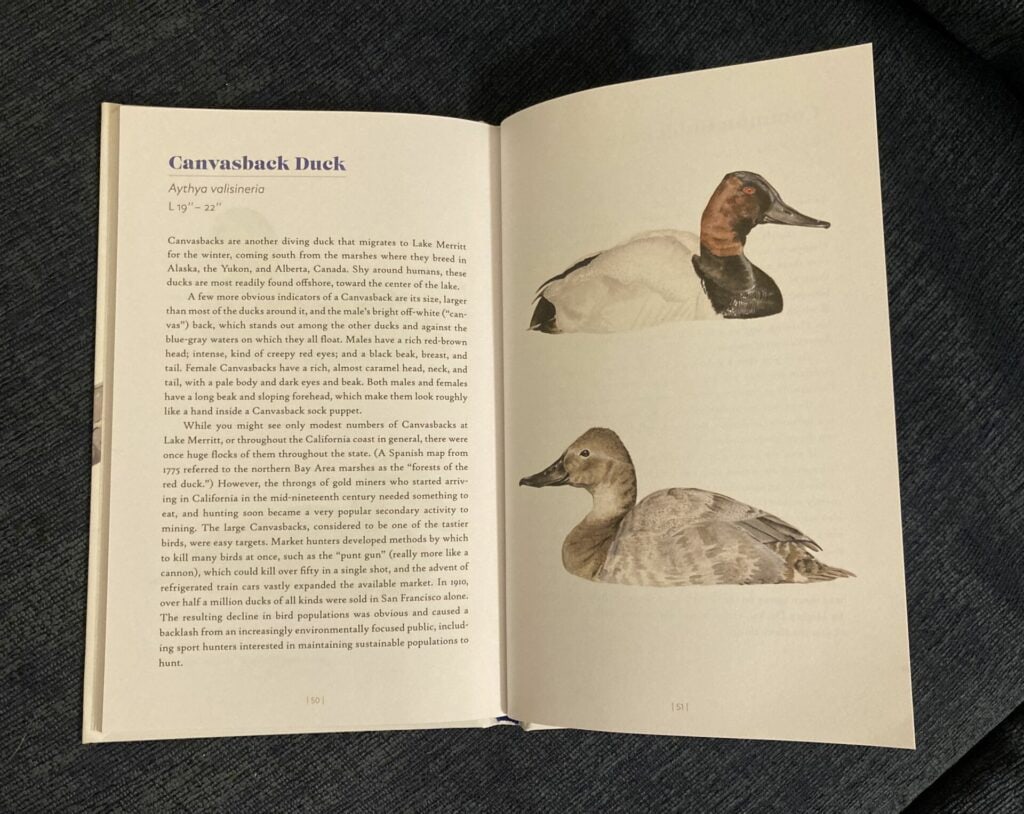 Canvasback page from Birds of Lake Merritt
Canvasback page from Birds of Lake Merritt
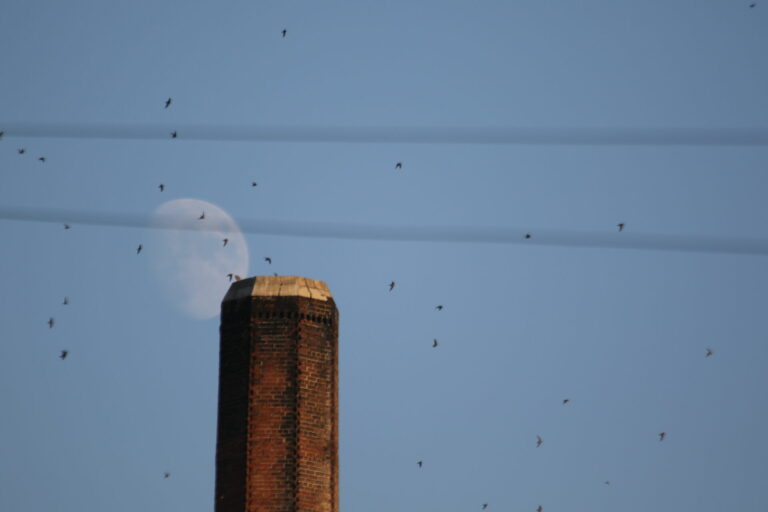
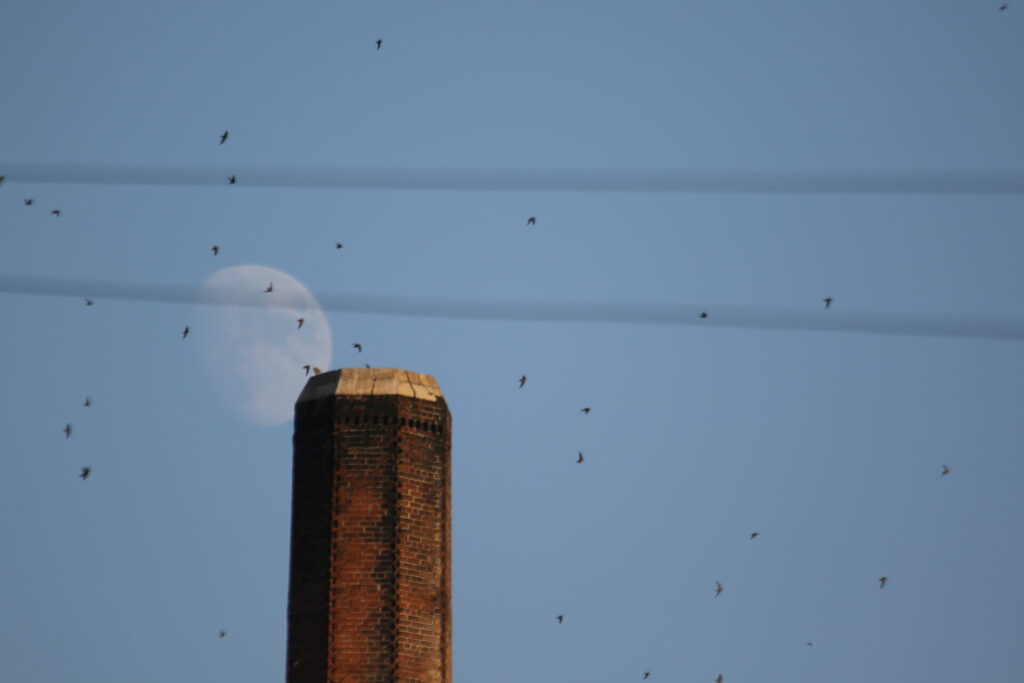 Swifts at McNear Brickyard in September by Michael Helm
Swifts at McNear Brickyard in September by Michael Helm

 Eco-Ed Director Clay Anderson finishes his Peregrine Falcon chalk art at the Berkeley Bird Festival
Eco-Ed Director Clay Anderson finishes his Peregrine Falcon chalk art at the Berkeley Bird Festival
 U.C. Campus Birding Field Trip during the Berkeley Bird Festival by Dan Harris
U.C. Campus Birding Field Trip during the Berkeley Bird Festival by Dan Harris